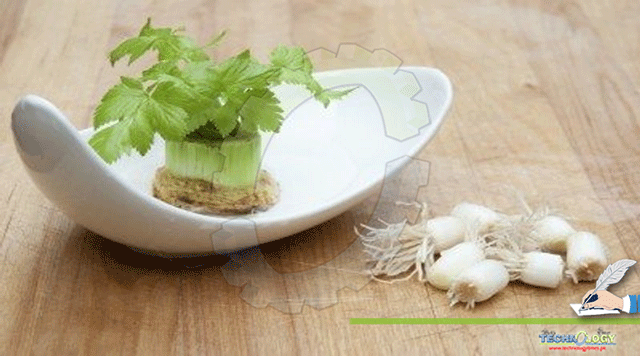You never know in what ways, the fruits, and vegetables you consume are grown. Had you seen for yourself, you might had been the last person to express your will to eat vegetables grown on the garbage.

By Prof Dr Abdullah G Arijo
We are what we eat (an English proverb). Simply human health depends upon eatables and drinkables. The issue of toxic vegetables being cultivated on wastewater is an old act and although much has been written and said, a constant deaf ear always ignores. Thanks to the Sindh High Court (SHC) that ordered on 6th May 2020 to local administration for uprooting such toxic vegetables that are grown on the garbage. The
You would not digest that fact that you may be eating 17 Toxic Fruits and Vegetables every day including Apples, Celery, Sweet bell peppers, Peaches, Strawberries, Nectarines, Grapes. and Spinach besides others that are grown on wastewater.
Wastewater irrigation to grow vegetables in the city is not a new phenomenon in Pakistan. May it be Karachi or Quetta, or any other part of Pakistan, toxic vegetables are cultivated and sold unchecked. This, in turn, possess hazardous to health for these vegetables are loaded with heavy metals, highly injurious to human health.
The use of wastewater for irrigation purpose is on the rise due to various reasons. In Karachi, the farmers are using the sewage to cultivate almost all type of vegetables, including cauliflower, spinach, brinjal, ladyfinger and tomato. According to an official estimate, at least 10 per cent vegetables being marketed in the provincial metropolis are grown with untreated municipal and industrial waste in the outskirts of the city and the surrounding districts of Sheikhupura, Kasur and Okara.
It is worth noting that, proper policy for handling the industrial effluent is lacking, which is why the Malir River’s water is polluted with dangerously toxic waste from factories. Farmers are illegally used hundreds of acres of land near that river to water their crops and grow fruits and vegetables. And the same vegetables are being sold throughout Karachi and consumed by Karachiites. There are lands available in Malir, Shah Faisal Colony, Mohabbat Nagar, Shesh Mahal, Azeempura, Reta plot, Natha Khan Goth and the connecting colonies involved in unchecked cultivation of vegetables on toxic water.
Vegetables absorb heavy metals from polluted soil and water, thus contaminating the food chain at all levels. Certain heavy metals such as lead, the study points out, can be toxic or poisonous even in small concentrations. In excess, elements like cadmium, copper, chromium, and iron can lead to a host of health problems such as kidney failure, weakened bones, cancer, diarrhea, stomach cramps, fatigue, loss of weight and high blood pressure. High levels of lead and zinc have been documented to disrupt the nervous system and even cause brain damage.
Like all plants, vegetables also require minerals and water for preparing their source of energy (glucose) using photosynthesis. However, the quantity of minerals has the utmost importance for the end-users.
Just as food nourishes our bodies, water serves as the lifeblood for plants. Plants absorb water through their roots that subsequently moves through their vascular system. As water disperses across a plant’s leaves, stems, buds, flowers, and fruit, it carries with it a variety of crucial nutrients–functioning similarly to the human circulatory system. However, just like water carries the vital elements throughout a plant, it also may carry contaminants. These contaminants range from biological (microbes) to chemical (heavy metals). While contamination is less of a concern for ornamental plants, fruits and vegetables given poor quality water can directly impact your health. Increasing evidence not only suggests that contaminated water causes a nutritional imbalance within the plant, but it also indicates a link to increased foodborne illnesses from microbes, parasites, and viruses, in humans. The concern is greatest in leafy vegetables that tend to be eaten without cooking.
Research studies are alarming as revealed by research designed to determine the geochemical sources and mobilization of nine trace elements in samples of plants (vegetables, fruits and fodders), from different parts of Karachi. Samples collected from farms located in the basin of and around Malir River (Map, 1) were considered polluted because here the industrial and municipal effluents were used for irrigation and different wastes (poultry, industrial and municipal) used as fertilizers. Samples collected from farms situated 45-km from Karachi along the highway and from Sakeran Deh in Hub were considered unpolluted because here water used for irrigation was obtained from wells and fertilizer used was not waste material. The results of the analysis of these samples show that Cd, Cr, Hg, Ni and Pb pollution is most common in plants. All other elements are well within the permissible limits. Presence the trace metals focus the extent of pollution in farms of Malir areas.
One must know as to what type of water should be used to irrigate these vegetables. Generally, plants absorb dissolved minerals and water for developing their tissues and making energy through photosynthesis. So, if the plant is provided with the best water for growing fruits and vegetables, it will fit on the phrase that “The healthiest plants–and in turn, the healthiest you” need to know.
Attempts have also been made to analyze compare the toxicity levels of vegetable crops grown on contaminated water, such as the Malir River with those vegetables that are grown on safe water. The results reveal an alarming contrast between the two.
Therefore, there is dire need to be highly careful in using these toxic vegetables filled with heavy metals posing hazards to health. Or you may be sorry for what you are.